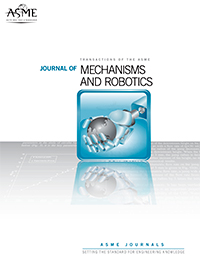Abstract
The design, modeling, simulation, and testing of a landing gear system that enables a UAV to perch on an object or surface is presented here. The working principle of the landing gear is inspired by the anatomy of birds that grasp and perch as tendons in their legs and feet are tensioned. In a similar fashion, as the UAV sets down on a structure, its weight tensions a cable which actuates opposing, flexible, multi-segment feet to enclose the target. To analyze the grasping capability of the design, a hybrid empirical–computational model is developed that can be used to simulate the kinematics of the system as it grasps objects of various cross-sectional shapes and sizes. The model relates the curvature of the feet to the displacement and tension of the cable tendon. These quantities are then related to the weight of the UAV through the leg geometry. It also evaluates enclosure and calculates contact forces to quantitatively characterize the grasp. Results demonstrate how the model can be used by designers to determine how a UAV can perch upon a structure of a given shape and size. If perched, the minimum weight required to maintain its position is calculated. A prototype system was fabricated, analyzed, and tested on a radio-controlled hexacopter. Experiments show that the landing gear enables the hexacopter to land, perch, and takeoff from a variety of objects. Finally, we begin to investigate the scalability of the concept with a smaller, lighter design.












